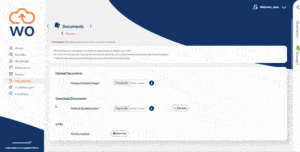As we navigate our way through a new way of many businesses working remotely, how does the experience of joining an organisation change when you are hiring remote workers?
How do you create strong connections when incoming employees haven’t visited your offices or had face-to-face meetings with your team?
These are the kind of questions that HR and hiring teams are now having to consider as remote working looks set to become the new normal for many organisations – at least for some time anyway.
These are important considerations because the experiences a person has when they join a company plays a major role in their future relationship – both positive and negative.
Why is onboarding important?
The most obvious negative impact of a poor onboarding experience is that candidates will simply drop out, ramping up hiring costs and disrupting productivity.
The recent Welcome Aboard* survey found that 46% of employees have had negative onboarding experiences. For more than one-in-ten (11%), this resulted in them dropping out.
Conversely, 63% said that a positive hiring experience helped them to feel a sense of loyalty and commitment to the employer.
How is the onboarding experience changing?
As more roles are becoming remote working positions, the way that new hires are processed needs to change.
The traditional way to handle onboarding is based on new hires physically entering their new workplace. Contracts will be completed and a welcome pack will be sent before they start.
But so much of the integration takes place after they start, when they meet colleagues, chat about tasks and responsibilities and get a feel for the general ‘vibe’ of the company.
With a remote worker, none of this organically takes place.
How does remote onboarding work?
Remote onboarding is a way to recreate the traditional starter experience but to do it all virtually and digitally.
Webonboarding allows HR and hiring teams to manage and monitor every aspect of the experience, using a cloud-based digital onboarding platform.
Everything that a new hire needs can be instantly accessed via an online portal. Contracts are signed digitally with each onboarding task tracked in real-time.
It gives HR the tools they need to create a process that is specifically designed to cater to the needs of people entering remote working roles, from the moment a role is offered and up to day one in a role.
Here’s a look at some strategies that can be used for remote employee onboarding.
Update your communications
Any information that’s shared during onboarding needs to be relevant to the nature of the role. Policies and guides need to be updated and revised for employees who will be working from home.
The scope of the information also needs to be reviewed. Without visiting a workplace, employees need to be given more of a ‘feel’ for the ethos and attitude of the company they are joining.
An effective way to achieve this is with a welcome video or webinar style presentation; rather than the conventional starter brochures and documents.
Integrate video meet-ups
Scheduling video-conferencing sessions into the onboarding process can help transform the experience for a new hire. These can be formal meetings with colleagues, team leaders and HR.
Some companies also set up some less formal interactions with team members, an opportunity to chat and get to know people. If several new hires are starting at the same time, creating connections between these can help build bonds with shared experiences.
Streamline the onboarding process
A fast and streamlined process will reduce stress and anxiety for those starting a remote working role. A long and drawn-out process is a particular problem when candidates haven’t visited a workplace or had face-to-face meetings.
With cloud-based onboarding management, the whole process can be completed in a matter of days. Candidates can see exactly where they are in the process and which tasks they need to complete.
Monitor your performance
Creating an effective onboarding process for remote workers means having ways to track performance. This feedback allows hiring managers to constantly refine and improve the onboarding experience.
Webonboarding provides integrated feedback tools with new hires rating their experience. Debrief sessions can also be scheduled to talk to new starters about the positives and negatives.
Remote working may be the norm for the moment and foreseeable future, but moving forwards we can learn from this time and focus on creating best practices for the future with tools to provide a streamlined and remote onboarding experience.




